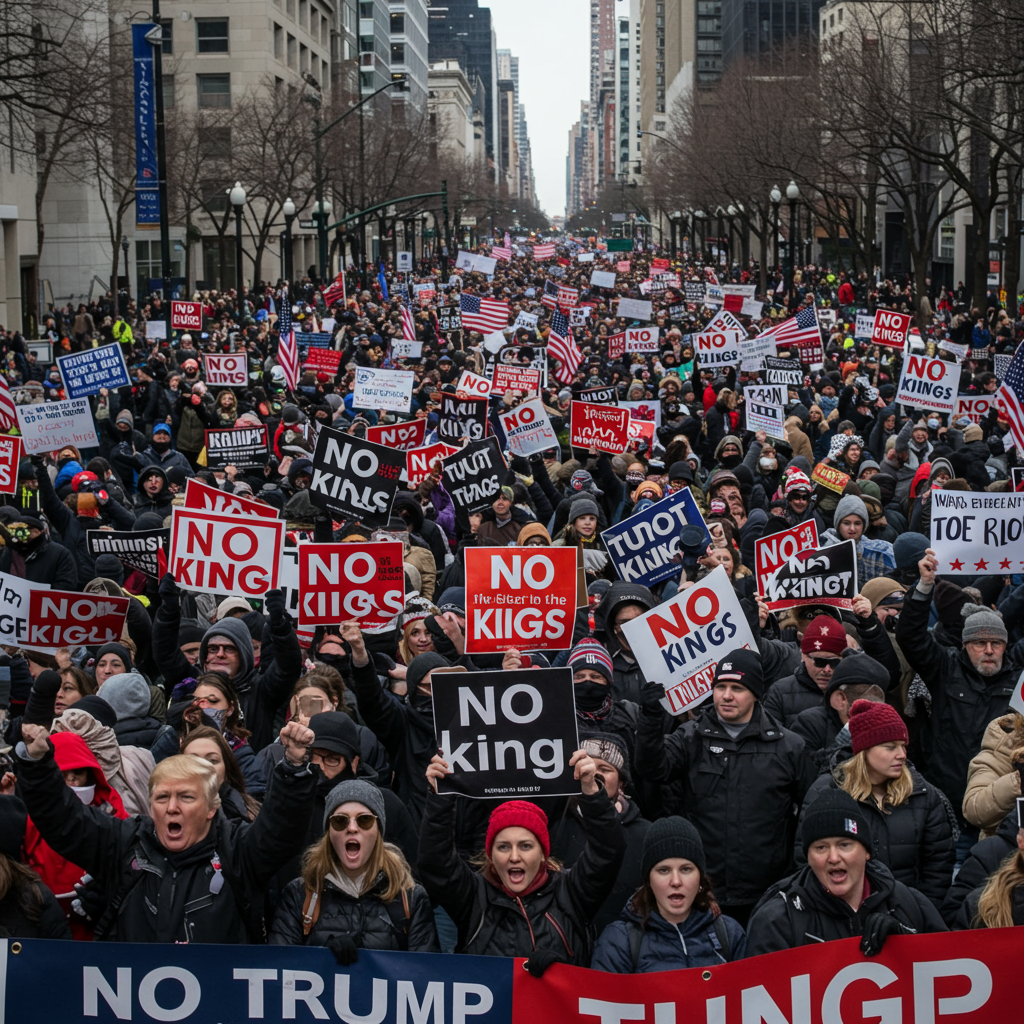A landmark decision by the US Supreme Court is poised to fundamentally alter the balance of power between the executive and judicial branches of government. This significant ruling, delivered on Friday, hands a major victory to President Donald Trump and sets a precedent that will embolden future presidents across the political spectrum. At its core, the decision dramatically curtails the ability of lower federal courts to issue broad, nationwide injunctions that can instantly block executive actions.
President Trump expressed clear satisfaction from the White House, calling the outcome a “big, amazing decision” and a “monumental victory for the constitution, the separation of powers and the rule of law.” For years, presidents from both parties have criticized the practice of individual district judges issuing orders that halt federal policies across the entire country, often seeing it as judicial overreach. The Supreme Court’s conservative majority has now significantly limited this practice, asserting that lower courts do not have “general oversight of the Executive Branch.”
Supreme Court Curbs Judicial Power
The central finding of the Supreme Court’s 6-3 decision is that federal judges in district courts lack the authority to issue injunctions that have a universal or nationwide effect. Historically, when a federal court found an executive action or law unconstitutional or illegal, judges could issue an order preventing its enforcement not just for the specific people who sued, but for everyone in the country. This judicial tool served as a powerful check, effectively pausing policies while their legality was fully debated in the courts.
However, the Supreme Court’s majority opinion, authored by Justice Amy Coney Barrett, determined that this widespread use of universal injunctions exceeded the proper scope of judicial power. The Court emphasized that courts should primarily focus on resolving disputes between specific parties (“cases and controversies”) and provide relief tailored only to those plaintiffs with standing to sue. While judges can still find executive actions unlawful, this ruling means they typically cannot simply issue a blanket order stopping the policy everywhere at once.
What Are Nationwide Injunctions and Why the Controversy?
Nationwide, or universal, injunctions emerged as a way for federal courts to provide comprehensive relief when a government action affected large numbers of people identically. For instance, if a policy was deemed unconstitutional, a nationwide injunction ensured no one in the country was subjected to the unconstitutional rule while the case was ongoing.
The controversy intensified during the Trump administration, which faced numerous such injunctions against its policies. Supporters of the practice argued it was essential for maintaining the rule of law and preventing a “patchwork” where a policy was legal in one state but illegal in another. Critics, including Presidents Trump, Obama, and Biden, argued it gave single judges too much power to derail national policy agendas based on potentially premature legal findings. The Supreme Court’s new ruling sides firmly with the critics of broad injunctions.
Impact on President Trump’s Agenda
For Donald Trump, the immediate and practical effect of this Supreme Court ruling is profound. It significantly strengthens his position to advance policies that had been stalled or blocked by lower court judges using nationwide injunctions. Upon returning to office, President Trump faced multiple judicial challenges to his executive actions and regulatory changes.
The Congressional Research Service documented 25 instances between Trump’s inauguration and April 29 where lower courts had issued injunctions against his administration’s actions. These blocked policies spanned various areas, including:
Cuts to foreign assistance programs.
Elimination of certain diversity initiatives.
Restrictions on the ability to terminate federal employees.
Other immigration reform measures beyond birthright citizenship.
Changes to election processes.
Following the Supreme Court’s decision, President Trump stated his administration could now “properly file to proceed with policies that have been wrongly enjoined.” This suggests a potential wave of legal maneuvers to lift previous injunctions or defend challenged policies under the new, narrower standard for judicial relief.
The Birthright Citizenship Battleground
The Supreme Court case specifically originated from challenges to President Trump’s executive order concerning birthright citizenship. Trump’s order aimed to change how citizenship is granted under the 14th Amendment, which states that all persons “born or naturalized in the United States, and subject to the jurisdiction thereof, are citizens of the United States and of the State wherein they reside.” Historically, this has been widely interpreted to grant automatic citizenship to almost everyone born on US soil, regardless of their parents’ immigration status. Trump has long disputed this interpretation, calling birthright citizenship a “hoax” and a method of “scamming our immigration process.”
President Trump’s executive order instructed federal agencies not to automatically recognize the citizenship of children born in the US unless at least one parent was a US citizen or a lawful permanent resident. This directive was met with lawsuits from immigrant rights groups and 22 states, leading lower courts in Maryland, Massachusetts, and Washington state to issue nationwide injunctions blocking the policy’s implementation.
The Supreme Court’s ruling did not decide whether President Trump’s interpretation of the 14th Amendment or his executive order is constitutional. That fundamental legal question remains unresolved and is likely to be fought in the courts, potentially reaching the Supreme Court again in its next term, as Attorney General Pam Bondi suggested might happen in October.
Instead, the ruling focused solely on the lower courts’ power to issue universal injunctions. The Supreme Court allowed Trump’s executive order related to birthright citizenship to potentially go into effect in one month (30 days after the ruling, June 28, 2025), but it simultaneously instructed the lower courts that issued the injunctions to reconsider and narrow their scope. This means any future injunctions must “comport with this rule and otherwise comply with principles of equity,” likely limiting relief to only the specific plaintiffs involved in the lawsuits.
Implementation Challenges and Legal Hurdles
Even with the nationwide injunctions lifted, implementing the birthright citizenship executive order faces significant practical and legal hurdles. States traditionally handle the processing of birth certificates, and many do not currently record the citizenship status of parents. States led by Democratic administrations may be reluctant to cooperate with a federal directive seen as undermining the 14th Amendment.
Furthermore, while nationwide injunctions are restricted, individuals or groups directly affected by the policy can still file lawsuits seeking narrower injunctions specific to their circumstances. Justice Barrett’s majority opinion explicitly left the door open for states to argue that a broader block is necessary due to their specific harms (e.g., financial burdens related to providing services to potentially non-citizen residents).
This sets the stage for complex, localized legal battles. Critics argue this could lead to a “chaotic patchwork of rights enforceability,” where the citizenship status of American-born babies could effectively depend on where they are born and the status of ongoing litigation in that specific jurisdiction. Opponents estimate the policy could deny citizenship to over 150,000 newborns annually if fully implemented.
Broader Implications for Future Presidents
The impact of this Supreme Court ruling extends far beyond President Trump’s current term or the birthright citizenship debate. It fundamentally shifts the balance of power towards the executive branch and away from the lower federal judiciary for all future presidents, whether Republican or Democrat.
Presidents will now have more initial freedom and time to implement their policy agendas before facing significant judicial obstacles. While courts can still ultimately halt presidential actions deemed illegal or unconstitutional, this check will likely occur much later in the judicial process—at the appellate court level or ultimately at the Supreme Court itself.
This means that policies previously blocked by immediate, nationwide orders could now take effect, at least in some areas, while legal challenges slowly make their way through the system. As one legal expert noted, the ruling “has fundamentally reset the relationship between the federal courts and the executive branch.”
Reactions and Controversy
The Supreme Court’s decision provoked strong reactions, highlighting deep divisions over the role of the judiciary and the scope of executive power.
President Trump and his allies celebrated the ruling as a triumph for his administration and the Constitution. They argued it put an end to “rogue judges striking down President Trump’s policies across the entire nation,” restoring the proper separation of powers.
Conversely, the Court’s liberal justices issued sharp dissents. Justice Sonia Sotomayor called the decision a “travesty for the rule of law” and “nothing less than an open invitation for the Government to bypass the Constitution,” arguing the Court was abdicating its “vital role” in defending rights. Justice Ketanji Brown Jackson described the ruling as “profoundly dangerous,” granting the Executive “unchecked, arbitrary power” and posing an “existential threat to the rule of law.”
Democratic Senate Leader Chuck Schumer echoed these concerns, calling the ruling a “terrifying step toward authoritarianism.” Legal experts outside the administration also warned the decision “sharply undermines the power of federal courts to rein in lawless actions by the government” and “systematically weakened judicial oversight and strengthened executive discretion.”
The controversy centers on whether limiting nationwide injunctions is a necessary procedural reform to prevent judicial overreach or a dangerous weakening of the judiciary’s ability to protect constitutional rights against potential executive branch oversteps.
What Comes Next?
The immediate next steps involve the lower federal courts that had issued the original nationwide injunctions against the birthright citizenship order. They have 30 days from the Supreme Court’s ruling to review and narrow their orders to comply with the new standard, limiting relief to specific plaintiffs who demonstrated standing.
Meanwhile, opponents of the birthright citizenship executive order are expected to continue legal challenges, likely focusing on the policy’s constitutionality under the 14th Amendment. These cases may proceed through individual lawsuits seeking narrower injunctions, potentially leading to inconsistent outcomes depending on the jurisdiction.
The ultimate question of whether the US can deny birthright citizenship to children born on American soil based on their parents’ immigration status is a major constitutional question that the Supreme Court may be forced to address directly in the future. This ruling did not answer that question, but it certainly reshaped the legal landscape for how and when such executive actions can be challenged.
Frequently Asked Questions
What did the Supreme Court ruling on birthright citizenship actually decide?
The Supreme Court’s ruling did not* decide whether President Trump’s policy to end birthright citizenship is constitutional. Instead, it ruled that lower federal courts overstepped their authority by issuing nationwide injunctions that blocked the policy everywhere. The Court limited these injunctions, allowing the executive order to potentially proceed in some areas, while requiring future judicial relief to be narrower.
How does this ruling affect President Trump’s other policies?
By limiting the power of lower courts to issue nationwide injunctions, the ruling makes it easier for President Trump’s administration to implement other executive actions and policies that had previously been blocked across the country. Policies related to foreign aid, diversity programs, government employment, and other immigration rules might now move forward unless challenged successfully with more limited, plaintiff-specific injunctions.
Does this mean the birthright citizenship policy will take effect immediately?
Not necessarily everywhere. The Supreme Court’s decision allows the executive order to potentially take effect after 30 days (from June 28, 2025), but it directed the lower courts that issued the original injunctions to narrow their scope. This means future legal challenges could still result in injunctions, but they would likely apply only to the specific individuals or groups who sued, potentially creating a patchwork of enforcement depending on location.
Word Count Check: 1197



